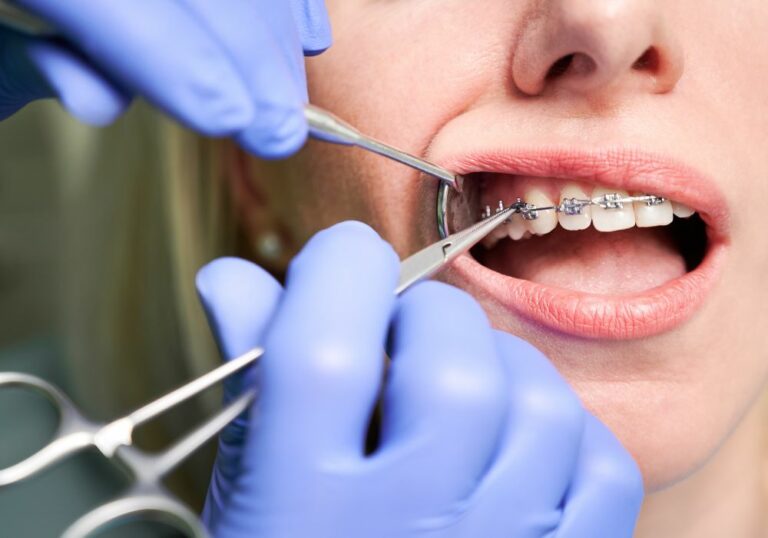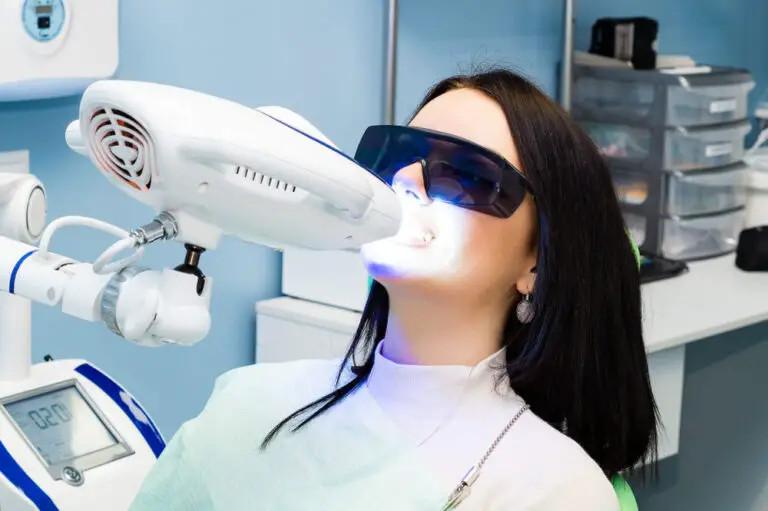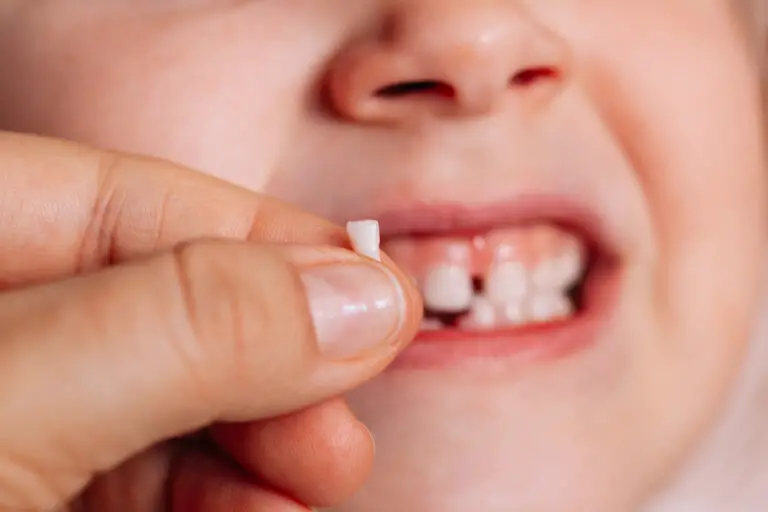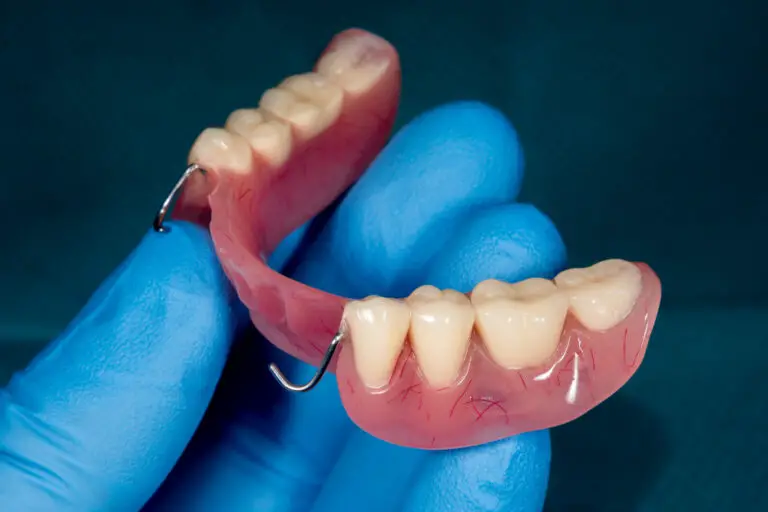Causes of Broken Teeth
Teeth can break for a variety of reasons. Some of the most common causes of broken teeth include:
Sports Injuries
Sports injuries are a very common cause of broken and cracked teeth. Contact sports like hockey, football, basketball, boxing, and martial arts put you at high risk for trauma to the face and mouth. A direct blow from a ball, another player’s elbow, or sports equipment can easily crack or fracture teeth. Wearing a mouthguard can help absorb some of the impact and protect your teeth, but mouthguards don’t completely prevent broken teeth during sports.
Accidents and Falls
Any kind of trauma to the face from a car accident, bike accident, fight, or fall can cause teeth to break. Your teeth may directly hit the steering wheel or pavement, or the force can still transfer through the jawbone and maxillary bone. Falls are a leading cause of dental emergencies like cracked and broken teeth. Tripping on uneven pavement, slipping on wet surfaces, and losing your balance when climbing over obstacles can cause your mouth to hit the ground forcefully, resulting in fractured teeth. Take care when walking or climbing to avoid damaging falls.
Chewing on Hard Objects
Chewing on ice cubes, hard candy, popcorn kernels, nuts, seeds, and other very hard foods can lead to cracked teeth over time. The hard exterior of these foods puts intense pressure on the chewing surface of teeth. Teeth that already have fillings, veneers, or dental crowns are especially prone to damage since restorative materials tend to be more brittle than natural tooth enamel. Avoid chewing excessively hard foods whenever possible, and never use your teeth to open packages or crack hard shells.
Tooth Grinding and Clenching
People who grind or clench their teeth are more likely to develop small stress fractures and chips in their teeth over time. The constant abnormal grinding motion wears down the chewing surfaces of teeth. Grinding and clenching often worsens with stress, anger, anxiety, and sleep issues. See your dentist for a custom nightguard to protect your teeth from clenching and grinding during sleep. Stress management, physical therapy, and behavior modifications can also help reduce teeth grinding and prevent damage.
Age-Related Wear
As we age, our teeth enamel naturally becomes thinner and more brittle. Years of chewing, acid erosion, and bruxism wear down and weaken enamel. This makes teeth more likely to crack and break as you get older. Older teeth require extra care to prevent fractures.
Tooth Decay and Cavities
Untreated tooth decay and cavities can lead to further loss of tooth structure and weak, brittle areas prone to cracking and breaking. Make sure to maintain excellent oral hygiene and get routine dental cleanings to detect and fill any cavities early before they grow large enough to substantially weaken teeth.
Signs Your Tooth May Be Broken
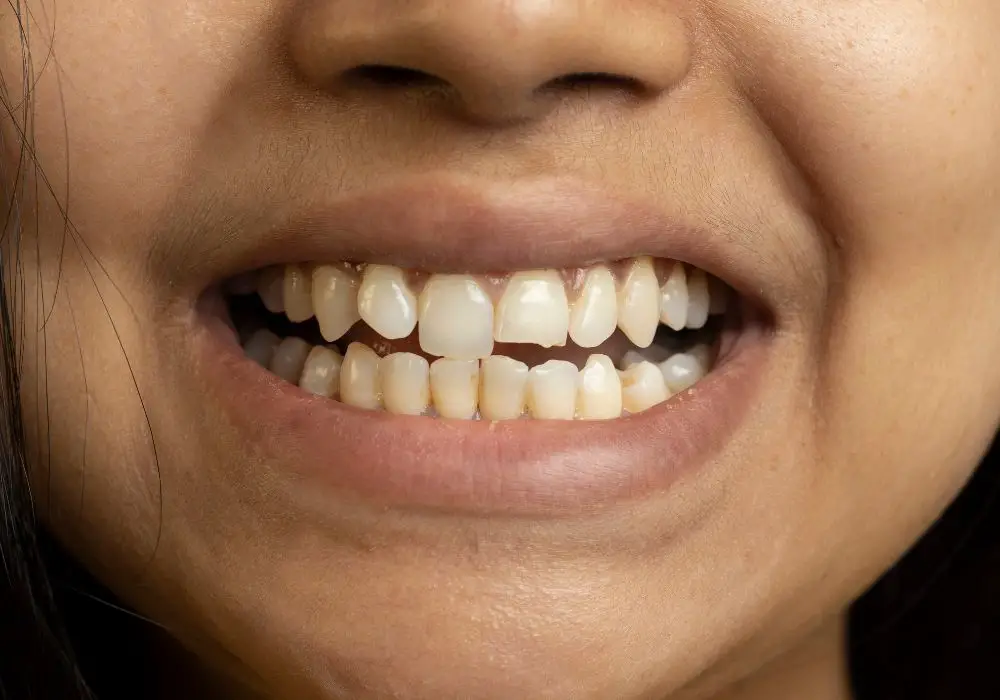
There are several signs that may indicate you have a broken or cracked tooth. Being aware of these symptoms can help you identify a fracture and seek prompt treatment:
- Visible fracture lines, cracks, or chips on the enamel surface of the tooth. The tooth may appear shortened or misshapen.
- Tooth pain when eating or drinking something hot, cold, or sweet. Lingering pain that continues even after the stimulus is removed.
- Tooth sensitivity to hot and cold food/drinks. Air on the tooth may also trigger sensitivity and pain that persists for a while after the air stops.
- Food and debris catching between the tooth and gumline.
- Lost filling or lost dental crown. A previously filled tooth now has the inner layers exposed as the old filling broke off with a portion of the tooth.
- Cut or injured gums or inner cheek. Sharp fractured edges of broken tooth fragments can lacerate and cut soft tissue.
- Change in tooth appearance or position. The tooth shifts out of alignment or turns gray, dark, or blue. This can indicate inner pulp damage.
- Bad breath or bad taste in your mouth that doesn’t resolve with brushing. This may signal an infected inner pulp chamber.
See your dentist immediately if you notice any of these warning signs of a possible broken or cracked tooth. Leaving damaged and fractured teeth untreated allows infections to take hold and leads to much more involved and expensive treatments. The sooner a cracked tooth is repaired, the better chance it can be saved.
When to Seek Emergency Dental Care Right Away
Some dental emergencies like a severely broken tooth require urgent evaluation and treatment from an emergency dentist. Go to an emergency dental clinic or hospital right away if:
- You have severe, unrelenting pain from a broken tooth that pain medication does not alleviate. This signals exposed nerves and infected pulp.
- You lose a large portion or all of your tooth structure in the fracture. The remaining tooth is unlikely to survive long without repair.
- The entire tooth breaks below the gum line with only the root remaining.
- A tooth is completely knocked out of its socket. It needs to be reimplanted quickly for the best prognosis. A missing tooth must also be replaced soon to avoid bone loss and shifting teeth.
- A broken tooth results in heavy bleeding from your gums that you cannot stop with pressure. This signifies serious soft tissue lacerations.
- Swelling rapidly develops around the broken tooth area.
- You have trouble swallowing, develop a fever, or feel ill after a tooth fracture. This may indicate a spreading infection.
The emergency dentist can provide immediate pain relief, apply medication to control infection, smooth sharp fractured edges, and stabilize the tooth as needed with a temporary filling or crown. This urgently protects the tooth and prevents worsening until you can follow up with your regular dentist for full repair. Waiting to seek emergency help will lower your chances of saving the tooth.
Professional Dental Treatments for Broken Teeth

Several dental treatments are available to properly restore damaged teeth, depending on the type, location, and extent of the tooth fracture:
Dental Bonding
Bonding is typically used for minor fractures confined to the outer enamel layer of the tooth. It works well for small chips or surface cracks and fractures. The dentist will smooth any sharp edges, apply a conditioning liquid to roughen the surface, and layer composite resin material over the defect. The material is shaped and hardened using a curing light. Dental bonding restores a natural appearance and protects the vulnerable underlying tooth layers from further damage. However, bonding material can stain over time and may need periodic replacement.
Dental Crown
A custom dental crown provides full coverage for a tooth with more extensive structural damage involving the inner layers beyond the enamel. It is needed when large portions of a tooth are broken off, a crack extends below the gum line, or an entire cusp of the biting surface breaks. The remaining damaged portion of the tooth is first shaped and prepared. Impressions and measurements are taken to fabricate a tooth-colored ceramic, porcelain fused to metal, or gold crown that precisely fits over the entire tooth. It is cemented in place to completely encase and protect the tooth. A crown reinforce and strengthens the fragile remaining tooth structure against future fracture. It usually lasts many years with proper care.
Root Canal Treatment
If the inner pulp chamber becomes infected due to a crack extending into the root, a root canal will be necessary before placing a protective crown. This treatment involves completely removing the inflamed or infected pulp tissue and nerves from the interior root canals. After the canals are cleaned, disinfected, and shaped, the hollow chamber and canals are filled and sealed. A temporary filling may be placed for a week or two until the custom crown is fabricated.
Tooth Extraction
Unfortunately, some severe tooth fractures cannot be repaired through crowns, root canals, or fillings, especially if extensive tooth structure is lost. Vertical root fractures that split teeth down the middle and fractures with severe infection often require extraction to prevent the spread of bacteria. The missing tooth can be replaced with a dental implant, bridge, or removable partial denture to restore chewing function.
Emergency Splinting
If a loose tooth is severely fractured, the dentist may splint it to adjacent strong teeth for stability. This involves temporarily wiring or bonding the fractured tooth to neighboring teeth as an emergency measure. Splinting offers immediate stabilization for up to 2-4 weeks and protects the tooth while long-term restoration plans are made. However, splinting is rarely a permanent solution.
Your dentist will examine the fracture and take x-rays to determine whether the tooth can be saved through restoration or if extraction is inevitable. Prompt professional treatment gives broken teeth the best chance of survival.
What to Expect During Dental Crown Treatment
Since many significantly broken teeth will require full-coverage dental crowns, let’s go over what to expect with this restorative procedure:
First Appointment
At the initial visit, the tooth area is numbed with local anesthesia so no pain is felt during preparations. Your dentist uses a small drill to file down the remaining natural tooth structure to make room for the thickness of the crown material. They remove around 1-2 millimeters of outer enamel and inner dentin, leaving a narrow tooth “stump.”
Impressions are taken of your bite and the prepared tooth using putty-like material. These impressions provide an exact model for constructing the custom crown. The tooth may feel mildly sensitive during filing but should not be painful due to the numbing medication.
Once the tooth is reshaped and impressions finished, a temporary acrylic crown is placed over the prepared tooth. This offers immediate protection while you wait for the permanent crown to be fabricated. It is held on with temporary cement. Your dentist will also make bite adjustments as needed to ensure the temporary crown fits correctly.
Crown Fabrication Period
It takes 2-3 weeks for the dental lab to manufacture your custom crown based on the impressions. Porcelain, ceramic, and gold crowns require careful crafting and firing processes to achieve optimal strength and aesthetics. Computer-aided design and milling may speed production of some crowns. During this period, it’s important to keep your temporary crown intact. Avoid sticky, hard foods that could pull it off.
Second Appointment
At your follow-up visit, your dentist will remove the temporary crown and try in your new custom crown to ensure proper fit and color match. You’ll have a chance to view the crown before final cementation. Necessary bite adjustments are made, and the crown is then secured into place using dental cement. Your tooth and gums may feel mildly sensitive as the numbness wears off. But you should not have significant pain. Over-the-counter pain medication can relieve any minor discomfort. You’ll need to avoid chewing on the crowned tooth until fully healed.
Proper Crown Care
With diligent oral hygiene and avoiding chewing excessively hard foods, a quality dental crown can last 5-15 years or longer before needing repair or replacement. See your dentist promptly if your permanent crown feels loose, falls out, or chips. Proper long-term care preserves its longevity.
Getting a protective dental crown requires minimal discomfort, only mild sensitivity, and preserves your natural tooth for years to come. Capping severely broken teeth in time is crucial to prevent extraction down the road.
Preventing Broken Teeth
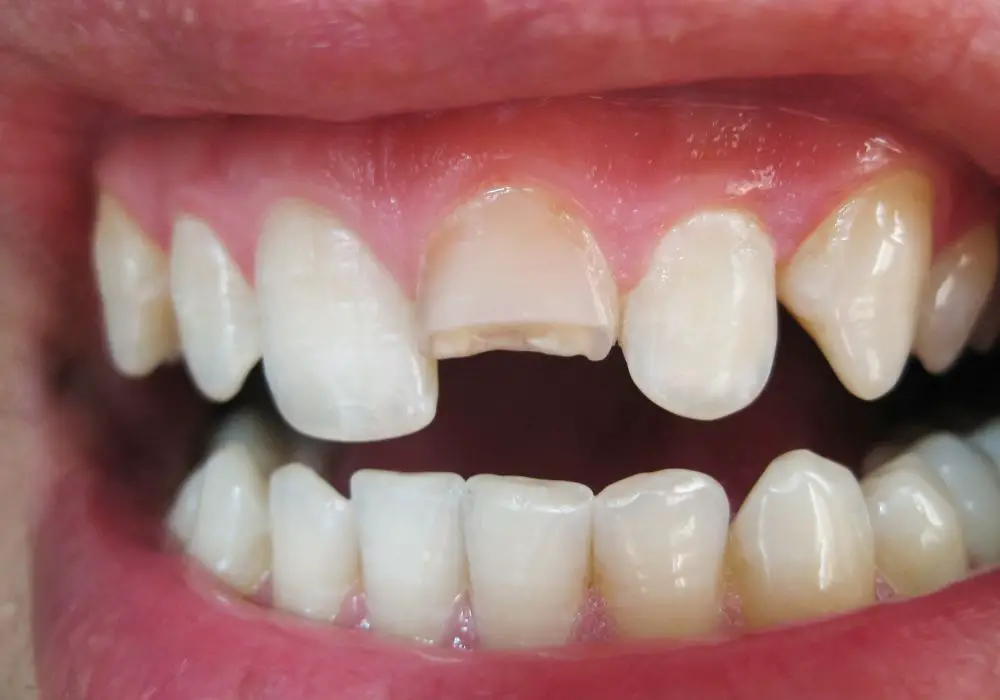
While not every dental trauma can be avoided, there are some preventive measures you can take to minimize the chances of your teeth becoming cracked, broken, or fractured:
- Wear a mouthguard for contact sports. Have your dentist make a custom athletic mouthguard that protects your teeth from sports collisions and injuries. Wear it for any sport where your face or mouth could be struck – like football, hockey, basketball, softball, boxing, lacrosse, martial arts, etc.
- Wear protective face gear when doing risky work. Use safety goggles, face shields, and mouthguards when doing activities like woodworking, welding, skateboarding, climbing, etc. to safeguard your mouth and teeth from harm.
- Address teeth grinding and clenching. See your dentist for a nighttime mouthguard to wear if you grind or clench your teeth. Counseling, physical therapy, and stress management can also help reduce grinding that damages enamel.
- Avoid chewing ice and other hard objects. Never use your teeth to open bottles, crack nuts or shells, bite fingernails or pens. Avoid habits that chip and wear down tooth enamel making them fracture-prone.
- Maintain excellent oral hygiene. Brush properly twice a day with fluoridated toothpaste, floss daily, use antibacterial mouthwash. Minimize sugary/acidic foods and drinks. This strengthens enamel and prevents decays that weaken tooth structure.
- Get routine professional cleanings and exams. Visiting your dentist every 6 months allows early detection and treatment of small cracks and decay before they worsen and fracture teeth. Protective dental sealants and fluoride treatments also strengthen enamel.
- Consider dental crowns or veneers if you have weakened enamel. Those prone to decay or with genetic thin enamels can get protective overlays to reinforce their teeth before cracks happen. However, crowns and veneers do require removing some natural tooth.
With vigilance and preventive habits, you can minimize needless broken teeth over your lifetime. But accidents do happen! Seek prompt care for fractures – saving damaged teeth is much simpler when treated early.
Financial Concerns with Broken Tooth Repairs
Rehabilitating a severely broken tooth is often expensive, especially if a root canal and dental crown are needed. According to the American Dental Association, average costs for common broken tooth treatments are:
- Cosmetic reshaping/dental bonding: $50 – $300
- Front tooth composite filling: $100 – $300
- Back tooth composite filling: $130 – $320
- Porcelain-fused-to-metal crown: $500 – $1,500 per tooth
- Porcelain crown: $800 – $3,000 per tooth
- Root canal treatment: $300 – $2,000+ per tooth
- Tooth extraction: $75 – $450 per tooth
- Flipper tooth partial: $400 – $1,500
- Maryland bridge: $250 – $550 per pontic
- Dental implant: $1,000 – $3,000+ per implant
Check with your dental insurance provider about coverage for broken tooth repairs. Most plans help pay a portion of basic fillings and crowns, often 50% up to an annual maximum. CareCredit and LendingClub offer 6-12 month no interest financing that allows you to pay off treatment through low monthly payments. Consider costs versus tooth prognosis when deciding on extraction versus restoration.
Frequently Asked Questions About Broken Teeth
Can you superglue a broken tooth fragment back on?
No. Any “super glued” tooth fragment will quickly fall off once exposed to saliva, food, and the forces of chewing. Only a dentist has the proper bonding material and expertise to successfully reattach a broken segment of tooth. Carefully store any segments you find until your dental visit.
How long can I wait to see a dentist for a broken tooth?
It’s extremely important to be evaluated as soon as possible after a tooth fracture, ideally the same day or within 24 hours. The sooner a cracked or broken tooth is restored, the higher the likelihood it can be saved. Extended delays lead to pulp decay and inflammation that lower your chances. Most dentists reserve time for emergency dental cases.
Should I try to remove a chipped tooth fragment stuck in my gums?
No, never attempt to dig out a piece stuck in gum tissue yourself. This risks infection and significant soft tissue injury. Instead, rinse gently and see your dentist promptly. They can carefully extract the fragment and clean the area to prevent problems.
Can a dentist fix a tooth with a fracture below the gum line?
Dentists can often restore and save a fractured tooth as long as 50% or more of the tooth structure remains both above and below the gum line. However, some vertical root fractures and severe splits unfortunately require extraction if too little intact tooth is left.
How painful is it to get a crown placed?
Having a dental crown placed rarely involves significant pain. The tooth area is numbed very effectively with local anesthetic before preparations begin. Some sensitivity in the hours after the procedure is normal as the numbness wears off. Mild over-the-counter pain medication is usually all that’s needed for a day or two.
Summary
Cracks, chips and fractures in teeth are common dental emergencies needing urgent attention. Prompt evaluation and restoration of broken teeth by a professional can often save damaged teeth and avoid extraction. Seek emergency care immediately if you experience trauma resulting in any type of tooth fracture. Don’t delay! With today’s advanced dental techniques, even severely broken teeth have an excellent prognosis when treated quickly.


